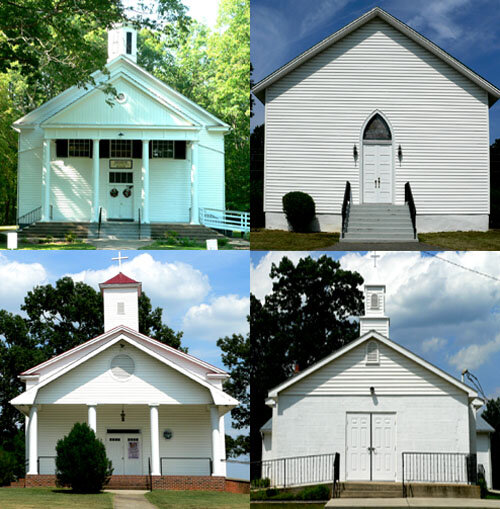We recently spent some time in south central Virginia, amid the sultry heat and humidity and the simple, often beautiful architecture of the rural South. Amidst all the famous and historical Georgian style houses and institutional buildings, what struck me the most was the apparent material and formal typologies of the local churches. Although certainly not all religious buildings follow these patterns, the vast majority of rural churches were firmly in either the all-red-brick or all-white camps. I will admit to not being familiar with either the fine distinctions among different Baptist dominations nor the history of white and African-American churches, but the temptation is to think that the material selection is driven more by economics than anything else. Looking closely at the form of these buildings it appears that these buildings are slow accumulations over time - a simple, gabled worship hall extended by the addition of later front porches and narthex and in some cases, brick cladding. Throughout this part of Virginia, the typical Georgian brick with white trim is the most revered, the style and materials of Jefferson's Monticello, James River plantations and grand country houses. The simple, white vernacular buildings are of a later date, post Civil War, and reflect maybe lesser economic means but also a much more sophisticated response to a hot, sunny, humid climate. What is most interesting may be that although there is a strong contrast of materials used in these buildings, the basic form of a gabled front with a gabled porch is identical. Whether on a busy road or deeply tucked into heavy, thick woods, the axial entry and center aisle seems to never vary. And I wouldn't bother trying to open up a paint store here, maybe just a warehouse of 5-gal tubs of white paint would suffice.


